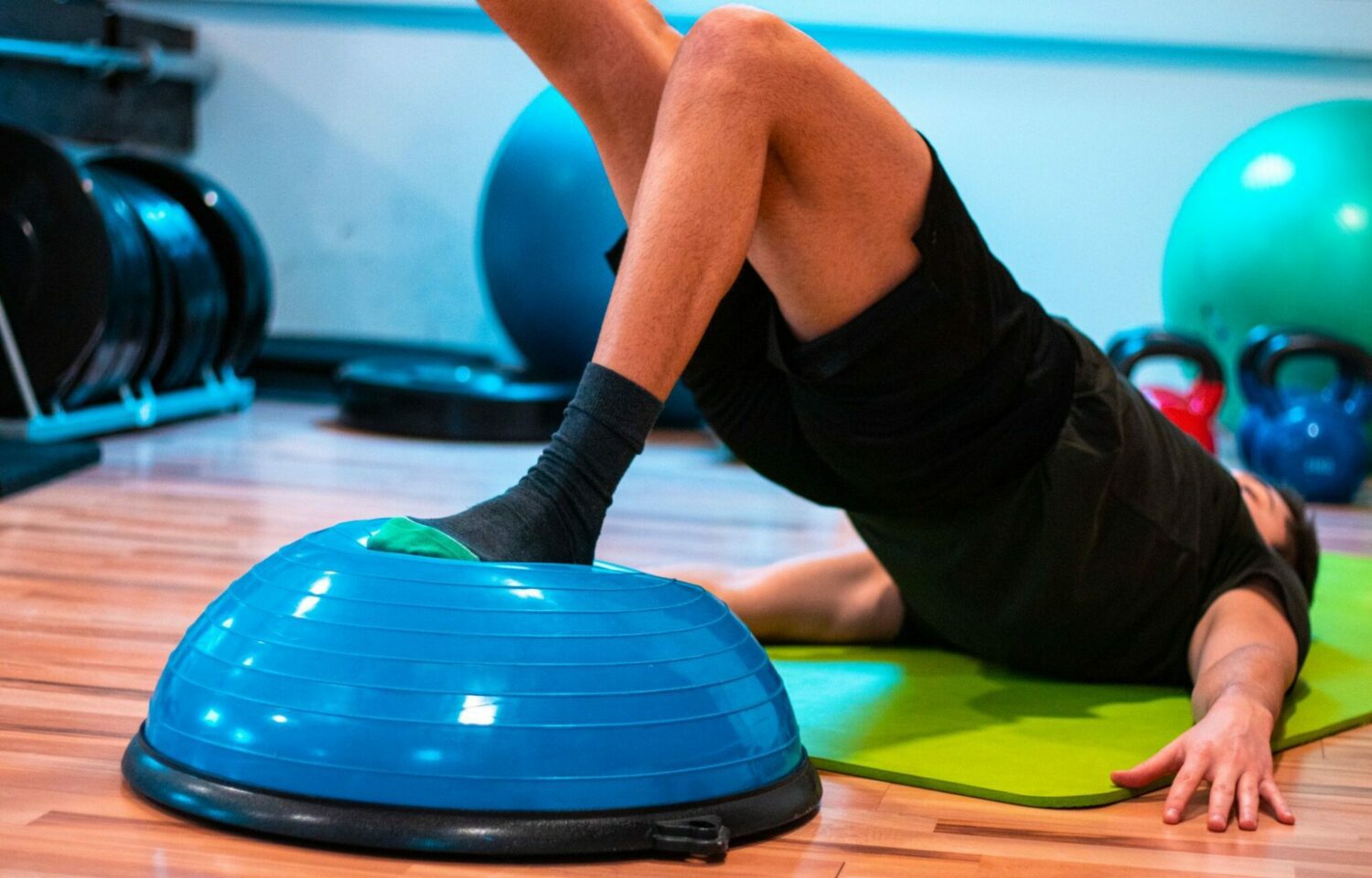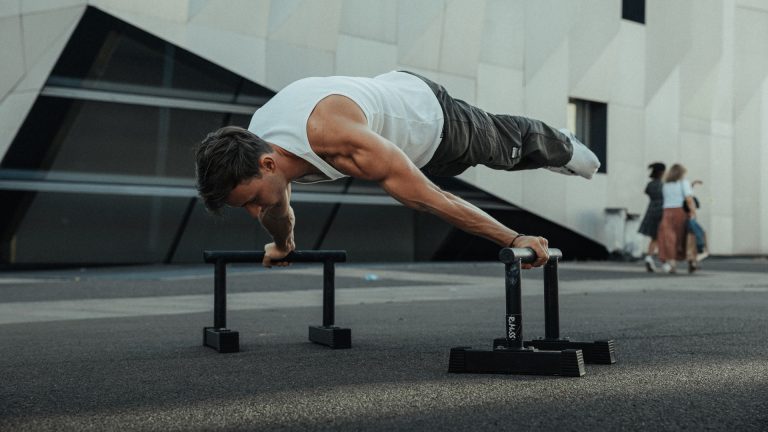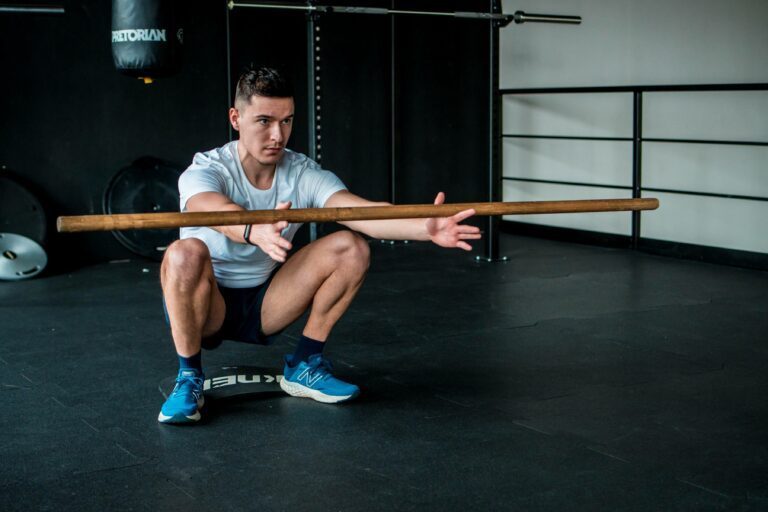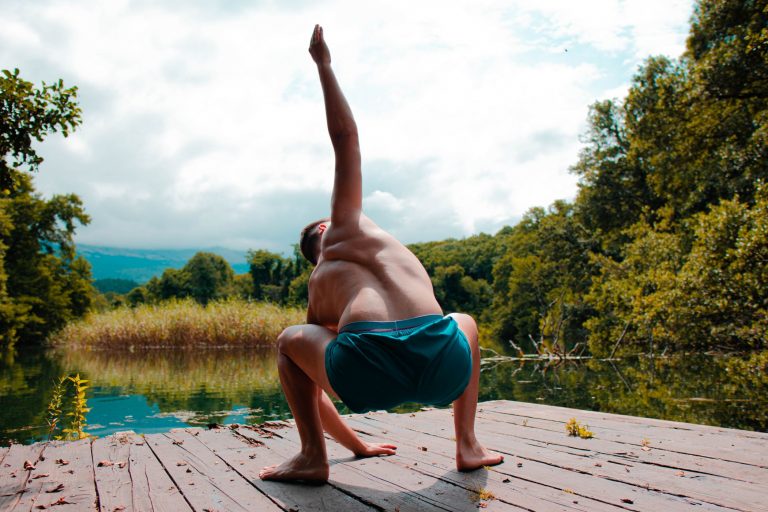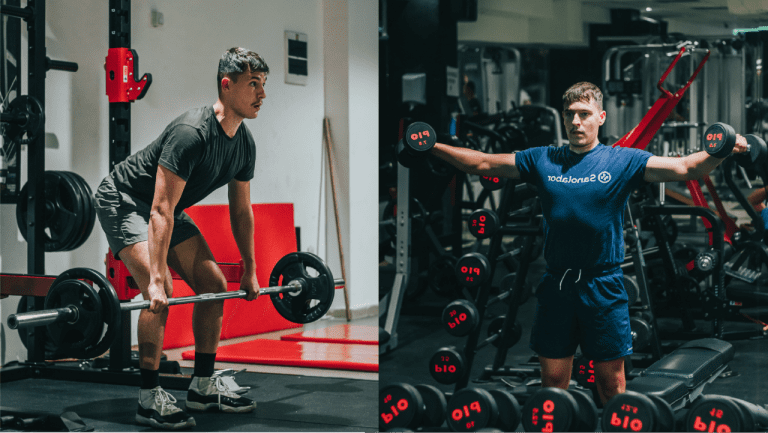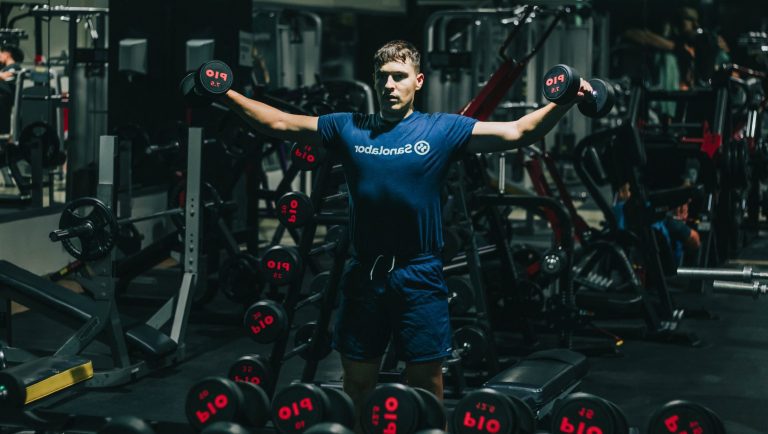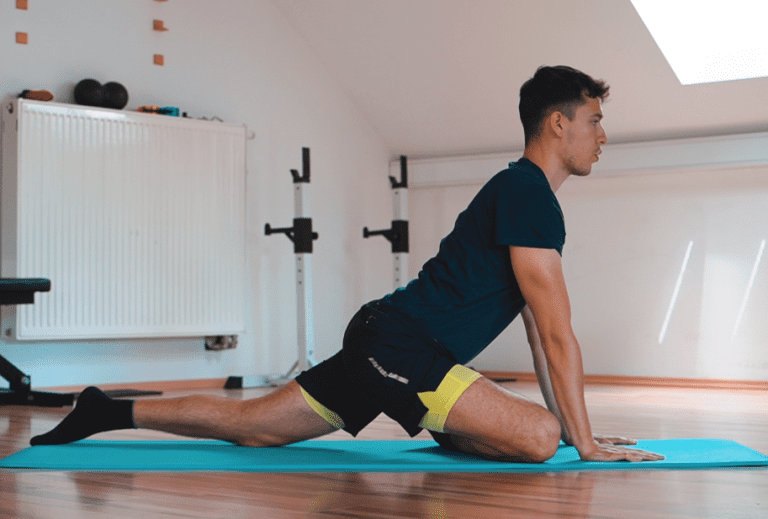Fix Lower Back Pain Protocol: 9 Exercises
Lower back pain is one of the most common chronic pains that most people experience at least once in their lifetime. In fact, the prevalence of lower back pain is 19.6% in individuals aged 20-59. This increases linearly with age, as the muscles lose their tone. (1)
This pain can stop you from doing what you want, limit your activity level, limit social time, cause sleep disruptions, and other problems. There are many different treatments to fix lower back pain, both active and passive treatment alternatives.
- Feel free to check out our Fix Bad Posture Guide with 14 Exercises, and the 10 Most Effective Office Stretches
Causes of Lower Back Pain
Lower back pain can come as a result of many different factors. From postural imbalances to acute disc injury or improper daily loading activity, all of these can contribute to lower back pain. So here is a list of some causes.
Bad Posture
Muscular Imbalance
Improper loading
Disc Injury
Nerve Impingement
Arthritis
Bad Posture can certainly be one of the main factors contributing to lower back pain. Whether it’s the forward shoulder (kyphosis), lordosis (anterior pelvic tilt), or Scoliosis (spine deformities) this can all put more compressive force on your spine.
Muscular Imbalance is one of the main triggers and causes of bad posture can trigger back pain. Usually, people with shortened iliopsoas muscles, tight lower back muscles, weak abdominals, and short hamstrings are more prone to experiencing LBP, as well as people with weak scapular retractor muscles and tight upper trapezius.
Improper loading can significantly worsen our pain over time. Whenever you are tying your shoes, lifting a heavy object, placing something on a shelf, cooking, or cleaning, you should aim for neutral spine curvature. Leaning too much when carrying a backpack on one side can amplify these imbalances and put a compressive load on the spine.
Disc Injury – also known as herniated or slipped disc is an injury that usually causes the inner gel-like part of the disc to protrude through the outer one. A slipped disc can cause nerve damage and compression, which may result in feeling numbness in the legs.
Nerve Impingement occurs when a disc puts compressive forces on the nerve. Usually called a pinched nerve or sciatica, it originates in the lower back and can spread pain or numbness to the leg. Sciatica can also be pain caused by irritation of the sciatic nerve sciatica.
Arthritis is a condition that can cause inflammation, stiffness, and tenderness in the vertebrae, limiting their Range of Motion and causing lower back pain.
Disclaimer: This Article covers an exercise protocol that can assist in reducing or preventing lower back pain, mainly caused by muscular imbalances and bad posture. For any serious condition or acute injury, make sure you consult your doctor, or physical therapist to find the right treatment. If you are experiencing severe pain that gets worse over time, make sure to consult with your doctor.
How Serious is it and should I worry?
Normally, the majority of people get better in a matter of days or weeks without any need for treatment. However, the pain may come back and slowly loosen up with time. Now there is a massive difference between feeling light pain in specific movements, feeling spasms and cramping, feeling constant aching pain, or a sharp sensation in your back.
Will just stretching alone help me?
Yes, in the short term. There is no problem with proper stretching exercise, but if chronic pain is persistent, stretching is like a painkiller pill and doesn’t last forever. A better solution is to improve the tone, and muscular strength of weak muscles, while increasing flexibility, and stretching out tighter muscles.
What are the three most important things for posture improvement?
The best change you can make is to ergonomically optimize your workstation which can allow for standing work, live an active lifestyle (stretch and strengthen muscles and move) and eat a mineral-rich diet (calcium, phosphorus & vitamin D).
Lower Back Pain Fix Protocol
Whether you want to prevent lower back pain from happening or you are experiencing back tightness and pain, this 10-minute protocol is a great training focused on the specific muscles that cause back pain in general.
It consists of three parts:
- Spine & Hip Mobility: 3 Mobility exercises
- Hip Flexor & Chest Flexibility: 3 Stretching exercises
- Abdominal & Glute Strength: 3 Strengthening exercises
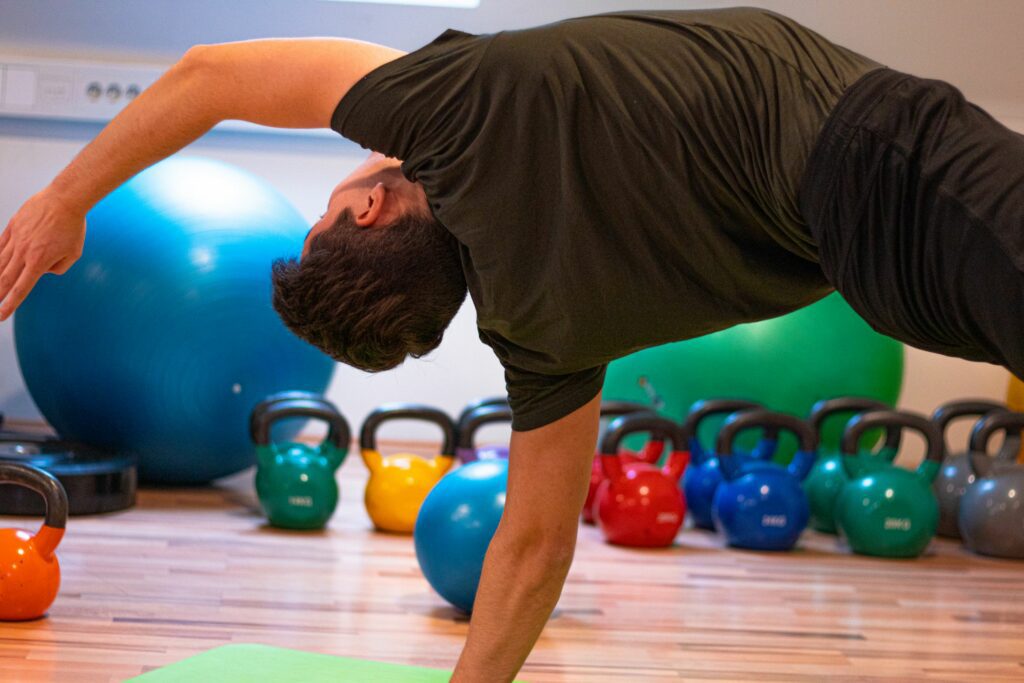
Spine & Hip Mobility
This section is all about warming up the structures around the lower back, increasing muscle tone while slightly stretching it out. The point is to improve circulation and release the tissues around while involving spinal movement.
Cat-Cow
Set yourself on all fours on the floor (knees and hands)
Slowly inhale and tilt your pelvis anteriorly, look-up
Slowly exhale and push your core and back up, butt and head down
Repeat 7 times
Hip Circles
Set yourself on all fours on the floor (knees and hands)
Balance out on your arms and core
Lift one leg (abduct) with a flexed knee off the floor
Rotate the hip in a circular motion forward
After 7 circles, repeat on the other side
Supported Deep Squat
Stand straight, feet shoulder-width apart
Slowly squat down, push your hips back, knees point toward the toes
Hold up to a stable object and squat deeper
Move your knees in and out slowly & gently
Repeat 10 times
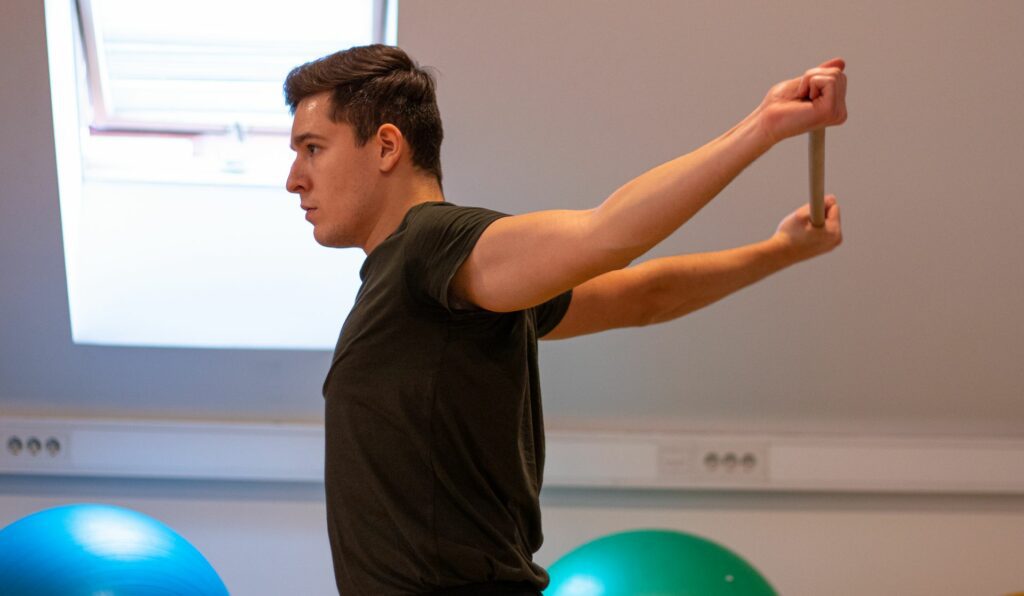
Hip Flexor and Chest Flexibility
This section allows to stretch out the hip flexor which in most people is the main cause of lower back pain. Too much sitting causes tight iliopsoas muscles, which then pull on the pelvis increasing its anterior pelvic tilt which results in increased pressure on your lumbar vertebras. Another important aspect is stretching your tight chest and shoulder which causes kyphosis and forward head posture.
Iliopsoas Stretch
Lunge position, Right leg is in front
Straighten your spine and hold to a wall (on the right)
Tilt your pelvis posteriorly
Raise your left arm overhead
Slowly lunge deeper, push your pelvis and bend to the right side
Breathe deep for 5 seconds
Repeat on the other side (4 times each)
Gluteus Stretch
Lie on your back and flex both knees
Now rotate your right leg so you press your right ankle to the left knee
Pull your left knee towards your chest (pulsating motion)
Breathe deep for 10 seconds
Repeat on the other side (4 times each)
Chest Stretch
Standing, lying (stomach), or sitting position
Interlace your fingers behind your back
Extend back to stretch your chest and shoulders
Hold for 5 seconds, breathe deep
Repeat 5 times
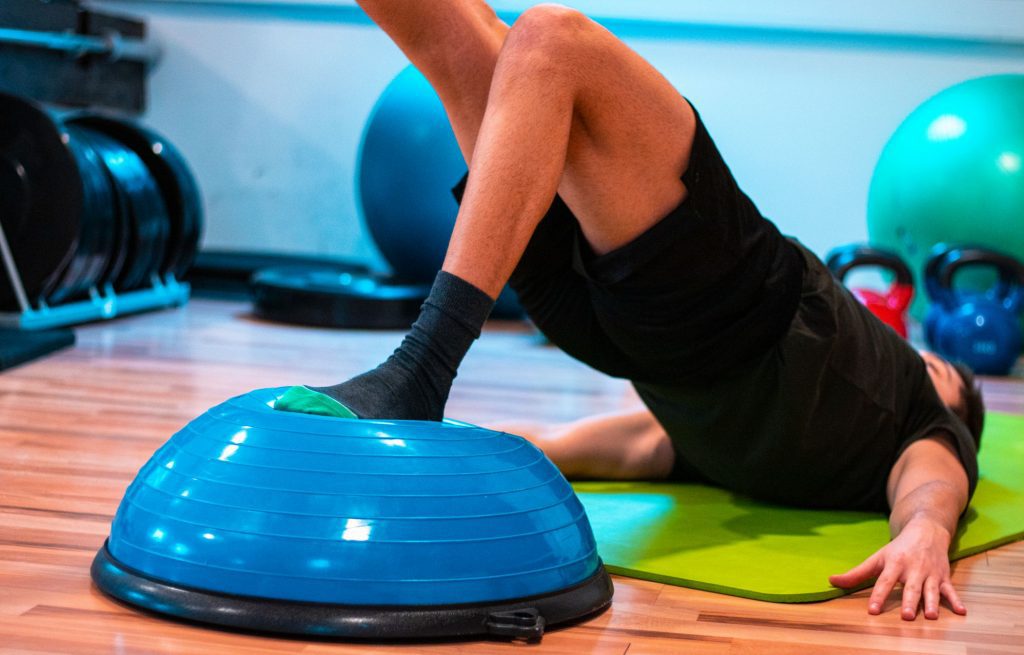
Abdominal & Glute Strength
Abdominal weakness is one of the reasons why you are tilting your pelvis and putting more pressure on your back. Strengthening glutes with abdominal muscles (not hip flexors) can improve your base strength which will minimize compression on the spine.
Bird Dog
Set yourself on all fours
Slowly lift and extend your right arm while keeping a tight core. Hold for 5 sec. then lower down, and switch to the other side. To make it more challenging you can position your knees closer and place your palms further.
Glute Bridge
Lying on your back, flexed knee, feet on the ground
Rotate your feet so toes point slightly outwards
Set your hands on the floor, flex your core
Push through your heels and drive the glutes up
Then slowly go down
Repeat 10 times
Hip Abduction
Lie on your right side
Right arm under your head
Flex both knees
Slowly lift your right knee by abducting the hip
Do not rotate your pelvis, then set the knee back down
Repeat 7-10 times, 2 sets on both sides
This whole protocol should take around 10-15 Minutes and may relieve pain instantly, due to relaxed back muscles because of the stretching. However, most people feel the effects in the first two weeks of doing these exercises, once daily.
Should I do my Back Exercise Protocol even if the pain disappears?
- The back protocol is made to stretch the exact muscles that are tight and strengthen the weak ones, which contribute to lower back pain most commonly. This means whether it’s used for prevention or natural treatment, it will work and the best thing is to progress these exercises and incorporate them into your daily life routine, as a warm-up. How to get rid of lower back pain?
- If your lower back pain originates from muscular imbalance or bad posture and you end up feeling tightness in your back, stretching your hip flexors and strengthening your core is the best option. If there is severe pain, chronic aching, numbness, or sharp pain you should consult with your physiotherapist or doctor for treatment.
Frequently Asked Questions
What’s the best natural treatment for lower back pain?
A quick fix is starching your lower back, but sooner or later the pain will catch up. Strengthening your core and glute muscles, while improving your posture and working environment (ergonomically) can significantly help.
What is active vs. passive treatment?
Active treatment is considered everything you do as an activity, such as stretching or strengthening the muscles, exercising while Passive treatment is massage therapy, kinesiology taping, acupuncture, pills, or electrotherapy.
Which yoga postures may help with lower back pain?
Yoga poses focus on stretching the lower back, improving hip mobility and core strength are helpful with lower back pain. This includes: Childs pose, Bridge pose, Yogic Squat, Yogic Plank, Revolved Side Angle, Side twist, and Half Moon Pose
Can I do the back exercise protocol even if there is no pain?
The back protocol is made to stretch the exact muscles that are tightened and strengthen the weak ones, which contribute to lower back pain most commonly. This means whether it’s used for prevention or natural treatment, it will work and the best thing is to progress these exercises and incorporate them into your daily life routine, as a warm-up.
Natural Treatment Alternatives
Besides the back exercise protocol for strengthening and stretching specific key muscles that have a high potential of improving one’s posture, other natural alternatives exist in the meantime, some of which are worth looking at. Some of these are pretty pricey but others are low-budget and quite affordable, so here are our top picks.
- Acupuncture is a very well-known system in Chinese medicine that is known to allow for better energy flow, by opening the meridians and improving energy flow and circulation, using fine needles inserted in specific key points on the skin.
- Massage is also helpful with back pain, but make sure you pick a professional. Massaging your back muscles can be great to relax the tension, but talk to your massage therapist first and describe your pain to avoid further injury or damage.
- Physiotherapy is similar to massage, just a little bit more specific. A combination of heat treatment and massage can improve your circulation, reduce pain and tension from your back, the natural way.
- Electrotherapy can help with specific muscle activation, by stimulating nerves and muscles through electric currents passed through the body. One of the most used is TENS, transcutaneous stimulation for short-term back pain relief.
- Chiropractor, by improving your bone misalignments can reduce your back pain. However, make sure you pick a professional and get the proper diagnosis. The point is to align the joints to ensure proper muscle functioning, nerve conductivity, and circulation.
Most of these natural alternatives help people with back pain, by either acutely removing the pain, or for longer periods. These can also be helpful since professionals like this can let you know what is wrong with your posture, give you some tips and exercise. Proper diagnosis is a must here, although they say chiropractor can adjust your spine even if you have a herniated disc, make sure you have a proper doctor’s diagnosis before you attempt any treatment for serious pain.
Active vs. Passive Treatment
Active Treatment
Passive treatment
Active Treatment is anything that you actively do, that involves activity or movement of your muscles meant to treat lower back pain. Usually, active treatments are more on the natural side whereby we are aiming at improving muscular imbalances that cause this pain. Treating the cause and not the symptom. A great example would be physiotherapy, massage, chiropractic adjustment, or stretching and strengthening exercise along with mobility enhancement.
Passive treatment is any passive way to treat your lower back pain, some of which may just treat the symptoms and other the real cause. Some of this includes medications, interventions, and surgery. Passive doesn’t mean that it’s bad for you, sometimes painkillers and surgery are the only way to treat an injury, but it is just a different treatment than the active. Usually, active rehabilitation and physiotherapy come after surgery.
For the most part, people with lower back pain caused by muscular imbalances that are not severe, experience pain reduction only with exercise protocol, made to target specific muscles in a matter of weeks. But massage, chiropractor, or acupuncture can help on the way there.
Bonus tip
The three most important things to prevent lower back pain are: Active lifestyle, Proper Posture, and Muscular Strength. It seems quite complementary and obvious to say so, but some people have back pain even after they took care of all of this. Why so? Your sedentary lifestyle is usually the biggest opponent to activity and proper posture.
Ergonomics
If you are interested in improving the ergonomics of your office or workstation, make sure you read this article, since here I will be mainly covering quick tips
Ergonomics is the art of designing your workplace to make sure you improve your physical health. Not so much to improve, as to maintain a proper one. The point of ergonomics is to ensure proper posture, reduce compression on your spine, knees, and neck while optimizing your productivity.
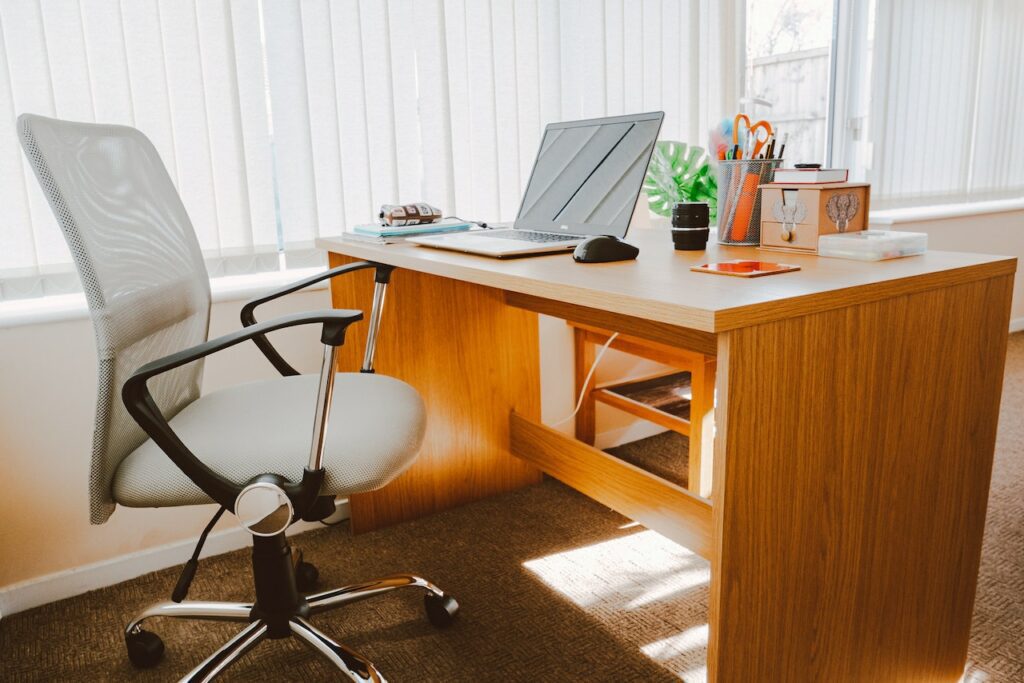
Rules for Ergonomic Office
- Adjust your chair height so your elbows are at around 90 degrees, forearms being on your arm supporters and desk. Reaching up (having 70 degrees shorter angle in elbows) will cause shoulder pain and stiffness.
- Adjust your Foot rest. While this isn’t a must for everyone, if your desk isn’t adjustable, and you increase your chair height, some of you might have your feet floating. Knees being at 90-120 degrees (slightly extended) make sure you can touch the ground with your feet.
- Adjust your Monitor Depth. This depends on your monitor size and curvature. Every monitor has a measurement of how far should it be so we can see the whole picture. For reference monitors at 24-27 inches are best at a distance of 5 feet, while 43-inch monitors at 7 feet. Adjust monitor height so you can see in the upper third of your screen while keeping your spine neutral.
- Adjust your Peripherals so you can easily reach them. Your keyboard and mouse should be in close reach so much so you don’t go further forward with your head, slouching your shoulders.
- Stretch your body – every thirty minutes, make sure to stand up and stretch your body with your arms raised up. Do a couple of side bending twists, neck stretches and deep breathing cycles to reduce the pressure build-up in your thoracic spine and keep on.
conclusion
Lower back pain is one of the most common chronic conditions and its main cause is a muscular imbalance, bad posture originating from a sedentary lifestyle. Before attempting to treating it, you should get properly diagnosed. If there isn’t anything serious, you should opt for postural improvements and back exercise protocol to stretch and strengthen specific muscles. Natural and Active ways of treatment include exercise, acupuncture, physiotherapy, massage, and electrotherapy. Another great tip is to ergonomically optimize your workstation.

